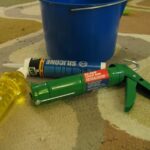Wearing a face mask has become a part of our daily lives in the midst of the ongoing pandemic. While masks provide essential protection against the spread of COVID-19, they can also be a breeding ground for germs and bacteria if not cleaned and sanitized properly after every use. It is crucial to understand how to clean and sanitize your face mask to ensure maximum protection from infection.
As healthcare professionals continue to emphasize the importance of wearing masks, it is equally important to emphasize proper care for these essential protective gears. In this article, we will discuss effective methods for cleaning and sanitizing your face mask at home. These methods are based on guidelines issued by public health officials and medical experts around the world and have been proven effective in reducing the risk of infection transmission. By following these steps, you can ensure that your mask remains clean, hygienic, and provides optimal protection against COVID-19.
Why Cleaning And Sanitizing Your Face Mask Is Important
The face mask has become a symbol of our times, representing our collective effort to combat the spread of COVID-19. However, it is not enough to simply wear a mask; proper hygiene is essential to ensure its effectiveness. The importance of mask hygiene cannot be overstated, as failure to clean and sanitize your mask can pose serious health risks.
When we wear masks, we exhale moisture and droplets that can accumulate on the fabric surface. Over time, these droplets and sweat can create an environment for bacteria and viruses to thrive. If left uncleaned, the mask can become a breeding ground for harmful microorganisms. This puts both the wearer and those around them at risk.
Not cleaning your face mask also compromises its filtration efficiency. A dirty or damp mask may not be able to effectively filter out respiratory droplets or other particles in the air. This can increase your risk of exposure to infectious diseases. Therefore, it is crucial to clean and sanitize your face masks regularly in order to maintain their efficacy in protecting against viral transmission.
To ensure that your face masks are properly cleaned and sanitized, it is important first to understand the different types of masks available and their specific cleaning requirements.
Types Of Face Masks And Cleaning Requirements
Face masks have become the new normal during the COVID-19 pandemic. With so many options available, it can be overwhelming to choose the right one. Different types of face masks are made from various materials that serve different purposes.
The most suitable types of materials for face masks include cotton, polyester blends, and polypropylene. These materials are breathable and can effectively filter out particles in the air. It is important to note that not all fabrics are created equal, and some may not provide adequate protection against viruses or bacteria.
In addition to choosing the right material, it is also crucial to ensure that the mask fits properly. Different types of face masks require a proper fit to offer maximum protection. For instance, N95 respirators require a seal around the nose and mouth area to prevent air leakage. Cloth masks should cover both your nose and mouth snugly without any gaps around the edges.
To summarize, choosing the right type of face mask is essential for preventing the spread of COVID-19. Cotton, polyester blends, and polypropylene are suitable materials for effective filtering while ensuring breathability. Proper fitting is equally important as different types of face masks require different levels of sealing around the nose and mouth area.
Washing Your Cloth Face Mask By Hand
To properly clean and sanitize your cloth face mask, hand washing is a recommended method. To begin, ensure that you have a clean and sanitized sink or basin. Use warm water and a mild detergent to gently wash the mask, being sure to scrub all areas thoroughly for at least 20 seconds. It is important to avoid using bleach or harsh chemicals, as they can damage the fabric and potentially harm your skin.
When washing your cloth face mask by hand, it is essential to follow proper hand washing technique. This includes wetting your hands with warm water and applying soap before rubbing them together for at least 20 seconds. Be sure to lather the soap on the backs of your hands, in between your fingers, and under your nails before rinsing thoroughly with warm water. After washing your hands, carefully remove the mask from the water without touching any other surfaces.
Once you have washed the mask by hand, it is important to allow adequate drying time before wearing it again. Hang or lay flat in direct sunlight if possible, and avoid wringing or twisting as this can damage the fabric. It is important to ensure that the mask is completely dry before wearing it again to prevent the growth of bacteria or mold. With proper hand washing technique and drying methods, you can effectively clean and sanitize your cloth face mask for continued use.
Moving forward, another effective way to clean your cloth face mask is by using a washing machine. Follow these steps for optimal cleaning results…
Washing Your Cloth Face Mask In A Washing Machine
As part of maintaining good hygiene practices during the COVID-19 pandemic, it is important to wash your cloth face mask after every use. Proper cleaning of your cloth face mask is essential to remove any dirt or germs that may have accumulated on it. One effective way to clean your cloth face mask is by washing it in a washing machine.
To begin the process of washing your cloth face mask, start by ensuring that the water temperature is hot enough. Hot water helps to kill any germs on the fabric and is an effective way to sanitize your mask. Additionally, add detergent to the washing machine before placing the mask inside. Detergent helps to remove any dirt and grime from the fabric.
When washing your cloth face mask, ensure that you select a delicate cycle on your washing machine. A delicate cycle ensures that the fabric does not get damaged during the wash cycle. To further soften the fabric, you can add a small amount of fabric softener as well.
Following these steps will ensure that your cloth face mask is properly cleaned and sanitized for future use. However, it is important to note that simply washing your mask is not enough – you must also dry it properly in order for it to be fully effective against germs and bacteria.
Drying Your Cloth Face Mask
After washing your cloth face mask, it is important to properly dry it to prevent the growth of bacteria and fungus. Air drying is the most effective method for drying your face mask. Hang it up in a well-ventilated area, such as a clothesline or hanger, and avoid placing it in direct sunlight as this can cause fading of the fabric.
During the air-drying process, ensure that moisture control is maintained. This means ensuring that there is no excess moisture in the surrounding environment. If you live in a humid area, consider using a dehumidifier to help with moisture control. Additionally, make sure that your mask is completely dry before storing it away.
Drying your face mask properly after washing not only ensures its cleanliness but also extends its lifespan. In the subsequent section, we will discuss another method of drying your cloth face mask: using a dryer. However, it is important to note that air-drying is still the most recommended method for drying masks due to its effectiveness in preventing bacteria growth and avoiding shrinkage of fabrics.
Using A Dryer To Clean Your Face Mask
There is a theory that using a dryer to clean your face mask can effectively sanitize it. Some people believe that the high heat of the dryer kills any germs or bacteria on the mask, making it safe to use again. However, there is no concrete evidence to support this claim. In fact, some experts warn against using a dryer to clean face masks as it could damage the fabric and decrease its effectiveness.
If you do choose to use a dryer, it is recommended that you add a dryer sheet to help reduce static and keep the mask soft. However, it’s important to note that while dryer sheets may make your mask smell fresh and clean, they do not have any sanitizing properties. They are simply designed to provide a pleasant scent and reduce static cling.
Overall, air drying your face mask is still considered the safest and most effective method for cleaning and sanitizing it. Not only does air drying help preserve the integrity of the fabric, but it also eliminates any risk of damage from high heat or abrasive materials. By allowing your mask to air dry in a clean, well-ventilated area, you can ensure that it remains free from germs and bacteria while maintaining its overall quality.
Transition: While air drying your face mask is highly recommended, there are other methods for sanitizing your mask with heat that may be more suitable for certain situations.
Sanitizing Your Face Mask With Heat
After using the dryer to clean your face mask, another effective way to sanitize it is by using heat. Heat sanitation methods involve exposing the mask to high temperatures that can kill viruses and bacteria. Three common methods for heat sanitization include using oven heat, boiling water, or steam.
Using oven heat involves placing the mask in a preheated oven at 70°C for 30 minutes. This method is effective in killing germs but may not be suitable for all types of masks as some materials can melt or deform under high temperatures. Boiling water is another option that requires placing the mask in boiling water for 10-15 minutes. While this method is affordable and easy to perform, it may not be practical for people who do not have access to a stove or large pot.
Steam sanitizing involves using a steamer or iron with a steam setting to expose the mask to high temperatures. This method effectively kills germs and also helps remove wrinkles from the fabric. However, it requires special equipment and may not be suitable for masks made from delicate materials that cannot withstand high temperatures.
While heat sanitation methods are effective in killing germs, they also have some drawbacks. High temperatures can cause damage or deformation of certain materials used in making face masks. Additionally, excessive heat exposure can reduce the effectiveness of the mask’s filtration ability. Therefore, it is essential to follow manufacturer guidelines when choosing a sanitization method and ensure that you do not overheat your mask.
Transition: While using heat is an effective way of sanitizing face masks, there are other alternative methods such as UV light treatment that you can use at home easily.
Sanitizing Your Face Mask With Uv Light
Did you know that UV light is an effective way to sanitize your face mask? According to a recent study, UV-C light can inactivate the SARS-CoV-2 virus, which causes COVID-19. This method of sanitization is becoming increasingly popular as people seek alternative ways to keep their face masks clean and safe to wear.
UV light effectiveness for sanitizing face masks depends on the intensity and duration of exposure. It’s important to note that not all UV light is created equal. Only UV-C light with a wavelength of 254 nanometers has been shown to effectively kill viruses and bacteria. Additionally, exposure time varies depending on the strength of the lamp being used. Studies suggest that a minimum of 15 minutes of exposure time will effectively sanitize your mask.
While UV-C light is an effective option for sanitizing your face mask, it’s not the only one available. Alternative methods include washing your mask with soap and water or using disinfectant spray. However, it’s important to choose a method that won’t damage or degrade the materials used in your mask. By taking proper care of our face masks, we can help prevent the spread of COVID-19 and protect ourselves and those around us from infection.
Transitioning into the subsequent section about using disinfectant spray: If you’re unable to use UV-C light or prefer another method, using disinfectant spray may be a viable option for keeping your face mask sanitized. Let’s take a closer look at how this works.
Using Disinfectant Spray To Sanitize Your Face Mask
Disinfectant sprays are a popular choice for those looking to sanitize their face masks. However, it is crucial to use the proper application of disinfectant spray to ensure that it is effective in sanitizing your mask. Proper application involves spraying the entire surface of your mask, making sure to cover all areas evenly.
When using a disinfectant spray to sanitize your face mask, it is essential to consider the disinfectant spray alternatives available. Some disinfectant sprays contain harsh chemicals that could damage your mask or cause skin irritation. It is recommended to use a disinfectant spray that is specifically designed for use on fabrics and surfaces that come into contact with skin.
To evoke emotion in our audience and encourage them to prioritize proper sanitation of their face masks, we must remind them of the importance of protecting not just themselves but also others around them. A properly sanitized face mask reduces the risk of transmission of viruses and bacteria, providing peace of mind for both the wearer and those around them. Additionally, by using safe and effective disinfection methods, we can contribute towards flattening the curve and saving lives during these trying times.
Moving forward, let us explore another method of sanitizing face masks- using hydrogen peroxide. This alternative may be more accessible and cost-effective for some individuals while still being an effective way to sanitize their masks thoroughly.
Using Hydrogen Peroxide To Sanitize Your Face Mask
As previously discussed, using disinfectant spray is an effective way to sanitize your face mask. However, there are other alternatives that can be used to ensure that your mask is clean and safe to use. One such alternative is hydrogen peroxide.
Hydrogen peroxide is a common household disinfectant that can be used to sanitize surfaces and items, including face masks. It works by breaking down the cell walls of microorganisms, making them unable to function properly and ultimately killing them. When using hydrogen peroxide for sanitizing face masks, it’s important to follow safety precautions to avoid any potential harm.
To use hydrogen peroxide for sanitizing your face mask, you’ll need a 3% solution of the chemical. Dilute the solution with water in a 1:1 ratio and soak the mask in the mixture for at least 30 minutes. After soaking, rinse the mask thoroughly with water and allow it to air dry completely before using it again. It’s important to note that while hydrogen peroxide is effective in sanitizing face masks, it may not be suitable for all types of materials as it can cause discoloration or damage.
| Hydrogen Peroxide Alternatives | Safety Precautions When Using Hydrogen Peroxide |
|---|---|
| Rubbing alcohol | Wear gloves when handling concentrated solutions |
| Bleach | Use only diluted solutions as concentrated bleach can be harmful |
| UV-C light | Avoid overexposure as it can cause skin damage |
In conclusion, using hydrogen peroxide is a viable option for sanitizing your face mask. However, it’s crucial to follow safety precautions when handling this chemical. If you’re unsure about using hydrogen peroxide or if your mask material isn’t compatible with this method, there are other alternatives available such as rubbing alcohol or bleach. In the next section, we will discuss another alternative – using vinegar to sanitize your face mask.
Using Vinegar To Sanitize Your Face Mask
The use of vinegar for sanitizing face masks has been widely studied and documented. According to research, vinegar’s antibacterial, antimicrobial, and antiseptic properties make it a beneficial sanitizing agent for face masks. The most effective methodology for using vinegar to sanitize face masks is to soak the mask in a vinegar and water solution for 20 minutes and then rinse it in warm water. Research suggests that this method is more effective at sanitizing face masks than washing with soap and water.
Vinegar Benefits
Vinegar benefits have been widely known for its multiple uses and disinfecting properties. It is a highly acidic solution that can kill bacteria and viruses, making it an effective cleaning agent for face masks. When used to sanitize homemade masks, vinegar can effectively remove germs and other contaminants that may have accumulated on the surface of the mask.
One of the main benefits of vinegar is its ability to break down dirt and grime. This is important when cleaning face masks as they are prone to collecting dust and other particles that can harbor germs. Vinegar also has antiseptic properties that can help kill bacteria and viruses on contact without leaving any harmful residue behind. This makes it an ideal cleaner for those who are sensitive to harsh chemicals or prefer using natural alternatives.
Another benefit of using vinegar for sanitizing face masks is its affordability and accessibility. Compared to commercial disinfectants, vinegar is relatively cheaper and widely available in most households. It can be easily mixed with water in a spray bottle or added to laundry detergent when washing cloth masks. With these benefits, incorporating vinegar into your regular mask-cleaning routine could help you maintain a safe and hygienic environment amidst this pandemic.
Vinegar Methodology
The benefits of vinegar for cleaning and disinfecting have been widely recognized. As the world continues to battle against the COVID-19 pandemic, people are looking for alternative sanitizing methods that are both effective and affordable. One such method is using vinegar to sanitize face masks, which has proven to be a useful solution in keeping face masks clean and hygienic.
Vinegar methodology involves using diluted vinegar solutions to clean and disinfect face masks. The vinegar is mixed with water in a spray bottle, or added to laundry detergent when washing cloth masks. The solution is then applied directly onto the mask’s surface, where it can break down dirt and grime while killing bacteria and viruses on contact. Vinegar’s antiseptic properties make it an ideal cleaner for those who are sensitive to harsh chemicals or prefer using natural alternatives.
In essence, incorporating vinegar into your regular mask-cleaning routine could prove beneficial in maintaining a safe and hygienic environment amidst this pandemic. With its affordability, accessibility, and effectiveness as a disinfectant, vinegar has become an important alternative sanitizing method worth considering. By following the proper methodology of using diluted vinegar solutions when cleaning face masks, you can ensure that your masks remain clean and free from harmful contaminants that could cause illness.
Storing Your Face Mask Properly
Properly storing face masks is an essential aspect of maintaining their hygiene. Face masks should be stored in a clean and dry place, away from any potential sources of contamination. It is recommended to use a paper bag or a breathable container for storage, as this allows the mask to air out and prevents moisture buildup. Additionally, it is important to avoid touching the inside of the mask while storing it.
Face mask hygiene practices should also be considered when storing them. Before storing a face mask, ensure that it has been properly cleaned and sanitized according to recommended guidelines. If the mask is visibly dirty or wet, it should not be stored but rather immediately washed or disposed of. Moreover, if you have multiple masks, label them with your name to prevent accidental sharing or cross-contamination.
In summary, proper storage of face masks plays a crucial role in maintaining their hygiene and effectiveness. By using a clean and dry storage container, avoiding touching the inside of the mask while storing it, and following proper cleaning and sanitizing guidelines before storage, we can ensure that our face masks stay safe for future use. Next up: how often to clean and sanitize your face mask.
How Often To Clean And Sanitize Your Face Mask
Proper storage of your face mask is essential to maintain its cleanliness and effectiveness. However, it’s also crucial to clean and sanitize it regularly. The frequency of cleaning depends on how often you use your mask and the level of risk in your environment. If you use your mask for a short period, such as when grocery shopping, then you can clean it after each use. For masks used for longer periods, such as those worn by healthcare workers, they should be cleaned after every shift.
When cleaning your face mask, it’s important to use recommended products that effectively kill germs without damaging the fabric or compromising the filtration ability. The Centers for Disease Control and Prevention recommends using regular laundry detergent and hot water to wash cloth masks. You can also use a bleach solution (4 teaspoons of bleach per quart of water) or alcohol-based solutions with at least 60% ethanol or 70% isopropanol.
Regular cleaning and sanitizing are crucial in maintaining a safe and effective face mask. Aside from using recommended products, there are other tips you can follow to ensure that your face mask stays clean and sanitized. Avoid touching the inside layer of the mask when wearing or removing it, always wash your hands before handling the mask, and do not share masks with others. By following these tips along with proper storage and regular cleaning, you can help protect yourself and others from harmful germs.
Tips For Maintaining A Clean And Sanitized Face Mask
As we continue to navigate the ongoing pandemic, face masks have become an essential part of our daily routine. Whether you opt for surgical masks or DIY face masks, it is imperative to keep them clean and sanitized. A dirty mask can harbor harmful bacteria and viruses, which can put your health at risk.
Maintaining a clean face mask is not only crucial for your health but also extends the life of your mask. One natural cleaning method is to use a mixture of hot water and soap to wash your mask thoroughly. You can also add a few drops of essential oils such as tea tree oil, which has antimicrobial properties that help kill harmful germs.
Another way to sanitize your face mask is by using steam. You can do this by placing your mask in a pot of boiling water for about 5 minutes or using a garment steamer or iron on the highest setting for at least 5-10 minutes. These methods are effective in killing germs without damaging your mask’s fabric.
In conclusion, properly cleaning and sanitizing your face mask is crucial not just for personal hygiene but also for community safety. By incorporating natural cleaning methods such as hot water and soap, essential oils, and steam, you can maintain the cleanliness of your mask while extending its lifespan. Remember to clean your mask regularly and avoid touching it while wearing it to minimize the spread of germs.
Conclusion: Why Properly Cleaning And Sanitizing Your Face Mask Is Crucial
The importance of wearing a face mask during the COVID-19 pandemic cannot be overstated. Face masks serve as a barrier against respiratory droplets that may contain the virus, which can significantly reduce the spread of the disease. However, wearing a face mask is not enough to protect yourself and others from contracting the virus. It is equally important to properly clean and sanitize your face mask.
Ensuring that your face mask fits properly is crucial in preventing the spread of COVID-19. A poorly fitted mask will not provide adequate protection against respiratory droplets. When worn correctly, a face mask should cover both your nose and mouth with no gaps between the mask and your skin. If your mask does not fit properly, it is crucial to adjust or replace it immediately.
Properly cleaning and sanitizing your face mask after each use is just as important as wearing one. A dirty or contaminated mask can increase your risk of contracting or spreading the virus. It is recommended to wash fabric masks in hot water with detergent after each use or dispose of single-use masks appropriately. By taking these precautions, you are helping to protect yourself and others from COVID-19 transmission.
Conclusion
Proper cleaning and sanitizing of face masks are crucial to prevent the spread of infectious diseases. Different types of face masks require different cleaning methods to ensure they are properly sanitized. Cloth face masks can be cleaned by hand or in a washing machine, but it is important to avoid harsh detergents or bleach that can damage the fabric.
After washing, it is essential to dry the mask completely before storing it in a clean, dry place. Experts recommend cleaning cloth face masks after each use, while disposable masks should be discarded after one use.
Maintaining a clean and sanitized face mask not only protects others from potential infection but also ensures the longevity of the mask. As medical professionals continue to stress the importance of wearing face masks to prevent the spread of COVID-19, proper cleaning and sanitizing practices have become more critical than ever. In conclusion, as with any medical device, proper maintenance is essential for optimal performance and effectiveness. Remembering this simple fact will ensure that we maintain our safety and well-being during these challenging times.
Image Credits
- “Not Available Hand Sanitizer Gloves Rubbing Alcohol Face Masks” by Duncan Rawlinson – Duncan.co (featured)





























